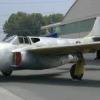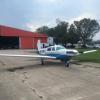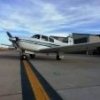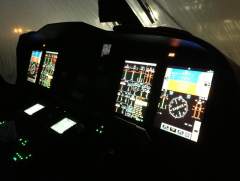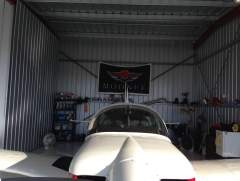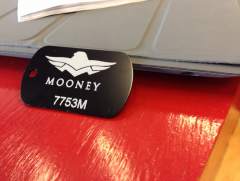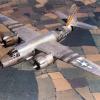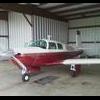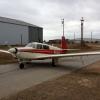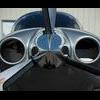Leaderboard
Popular Content
Showing content with the highest reputation on 04/13/2013 in all areas
-
I see a lot of threads about the market, and the best strategy to sell or buy a plane. I just finished selling our 1968 M20C, at $1k less than list price, and thought I would share my experience. It was a well-equipped, beautiful plane, but it had damage history (multiple gear-ups and prop strikes, along with a forced landing on a road in 1994 where the wings struck sign posts). It also had a 1300-hour, just past mid-time, engine. I did not use a broker. I took the time to put ads on Barnstormers, Controller, and Trade-A-Plane, along with Mooneyspace. I was concerned about the amount of my time it would consume; however, almost all the inquiries came through email, rather than telephone. I found that to be very manageable. I priced the plane aggressively. I made it stand out as the best deal on the market, by listing it well below the list price of the next comparable short-body Mooney with an IFR GPS, 4-cylinder engine monitor, standard 6-pack panel, a functioning autopilot, and nice paint and interior. It got a lot of attention. I probably received 2 or 3 inquiries per week. I saved a lot of time and effort by compiling all the photographs, specs, logs, etc and putting them into my Dropbox account (www.dropbox.com). I then had a standard email with links to download all the information. When I got an inquiry, I just pointed them at the info and said, "Let me know what your offer is." I had two very serious buyers who were told by multiple lenders that they could not get financing on a plane over 30 years old, or one with damage history, or one with a mid-time engine. They eventually walked away. The third serious buyer got it done. I don't think he's flown the plane yet, since the plane is still in the shop getting a fresh annual and having some minor issues fixed. I hope he enjoys the plane as much as I did. I hear he has joined the site, but I'll leave it up to him to introduce himself. One interesting fact - he was not concerned about the "damage history", because the aircraft he's been flying usually have multiple bullet holes in them. Any airplane that has not been shot up seems like an improvement. It took about 30 days to get the final signed contract, and another 30 days for inspection and closing the deal. Part of that delay was me finding a weekend to take it to his mechanic for the pre-purchase inspection. My take away? The market is still alive. You can sell your plane. Lots of people are out there looking at Mooneys. I watched the market for a long time before listing, and the ones that sit for years are sitting for a reason. I'm sad to see the plane go. I learned to fly instruments in it, and took my family a lot of places. But I think the new owner will take care of it.2 points
-
That video shows yet another reason I love my mooney... ATC was calling out planes as they flew by as high wing or low wing with the exception of your Mooney. Our planes are so cool there's no way you'd be mistaken for one of those other low wings. #mooneysoul2 points
-
ADS-B reduces the risk of runway incursions with cockpit and controller displays that show the location of aircraft and equipped ground vehicles on airport surfaces – even at night or during heavy rainfall. ADS-B applications being developed now will give pilots indications or alerts of potential collisions. ADS-B also provides greater coverage since ground stations are so much easier to place than radar. Remote areas without radar coverage, like the Gulf of Mexico and parts of Alaska, now have surveillance with ADS-B. Relying on satellites instead of ground navigational aids also means aircraft will be able to fly more directly from Point A to B, saving time and money, and reducing fuel burn and emissions. The improved accuracy, integrity and reliability of satellite signals over radar means controllers eventually will be able to safely reduce the minimum separation distance between aircraft and increase capacity in the nation’s skies.1 point
-
Holly smokes there is some common sense! All the damn engine cares about is the right fuel to air mixture to start. I've got no idea why people are hitting the boost pump for a sec with a warm engine. All that happend is after you shut down the 25psi of fuel leaked past into the cylinders making a over rich condition. And scott your simplistic method of restarting makes it easy.1 point
-
The one that works for me and it starts right up ALWAYS is: When I shut down I leave the throttle just off of idle (something that would produce 800 - 1000 RPM) and pull the mixture. When I go to start back up I don't move anything. Master on and turn the key.1 point
-
From the album: Work
Took this durring morning run ups. its a great office. The Honeywell Primus Epic system is a great Airline class glass cockpit system.1 point -
There is a dot so you stay organized in space. There are four dots on two runways. One ship is landing short and the other is landing long on the same runway at nearly the same time. If you are not able to stay high and put down on your spot, you will be going around... It's a little challenging, but only the most busy times are this full. You can see in the video how helpful it is to have a knowledgable co-pilot... It realy is cool to be a Mooney pilot! Best regards, -a-1 point
-
1 point
-
1 point
-
Amen brother! I'm at the same place. My F with the mods on it does 155k and that is plenty for me... I certainly don't want to start over either...1 point
-
Given my budget and needs, I think a J would be my perfect plane. Unfortunately with bladders, GPSS and WAAS upgrades, I've spent a good chunk of money to get my plane where I want it and relatively squawk free-knock on wood big time. I don't want to start over. If my income were to double, I'd have an Ovation or Acclaim in my hangar, lol.1 point
-
1 point
-
You can get new lenses here. That, spray paint and the silver paint pen they sell will make them look like new. http://www.aircraftengravers.net/aircraft/fp_list.htm1 point
-
Nice!! I think the snappier performance comes from not having to haul that chest of gold bars around with you any more!1 point
-
Pound for pound, training is the best bang for the buck, safety wise, going. Some 90% of accidents are pilot error. The airplane was capable of the operation but the pilot wasn't. No amount of gizmos will overcome that. Cirrus pilots are still trying to understand that. Your envelope should be nearly as big as the envelope of the airplane. Yet time and time again, I give BFR's to pilots who bank 15 degrees in the pattern and fly a 1 mile wide downwind, come in 20 knots over book speed, land halfway down the runway, with half flaps, then burn down the brakes and tires to stop before the end of a 6000 foot runway. Before they run out of fuel, of course, because it burns 10 GPH, so they call it 15, and never land with less than 2 hours reserve although they switched tanks on final and no clue which tank has 8 gallons and which has 16, Necessitating 3 landing on an XC instead of one. Because it "feels right". All in the name of 'Conservative". I challenge you folks to understand what that really means.1 point
-
Here's the only video that came out from my recent trip from Denver to Cabo: The first leg from Denver to El Paso, TX. Here's the flight track: http://flightaware.com/live/flight/N3833T/history/20130314/1300Z/KAPA/KELP1 point


